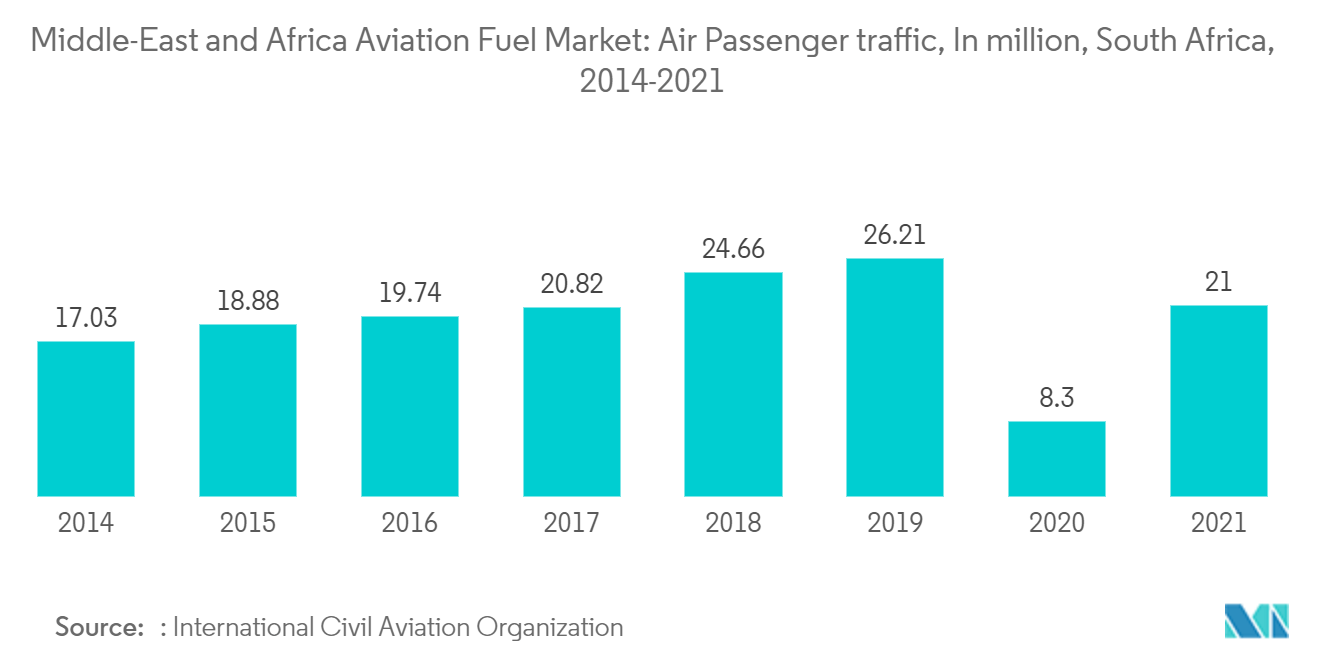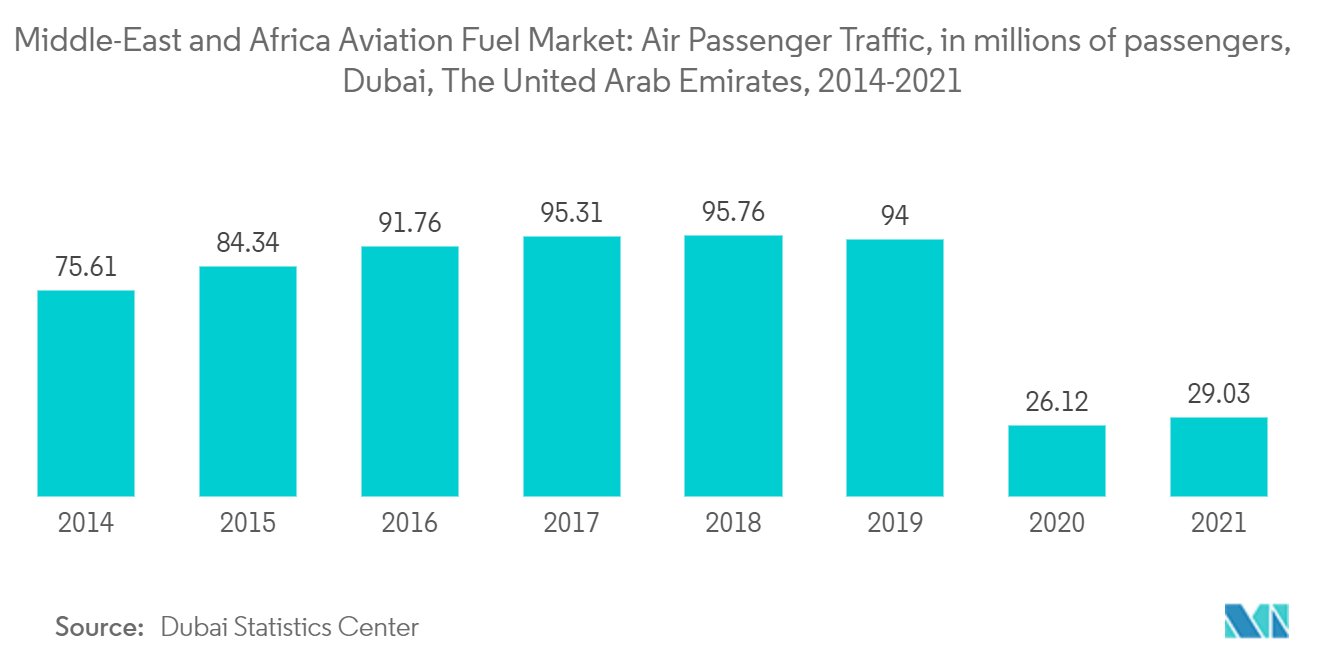Market Trends of Middle-East and Africa Aviation Fuel Industry
Commercial Sector to Dominate the Market
- Commercial aviation includes operating scheduled and non-scheduled aircraft, which involves commercial air transportation of passengers or cargo. The commercial segment is one of the largest consumers of aviation fuel, and it accounts for a quarter of the total operating expenditure for an airline operator.
- The Russia-Ukraine conflict has further aggravated the issue of high prices of oil, which had been maintained above their original prices due to supply cuts by OPEC+ nations. An increase in the prices of crude oil will adversely impact the requirement for aviation fuel in the commercial aviation sector, which is the major user of the commodity in the country.
- In 2021, Saudi Arabia signed a financing agreement worth USD 3 billion to partially finance requirements for aircraft it has ordered. The amount covers the airline's aircraft financing requirements until mid-2024, helping finance the purchases of 73 aircraft previously ordered, it said in a statement. The airline has ordered Airbus A320neo, A321neo, A321XLR, and Boeing 787-10 jets.
- The number of passengers that passed through Saudi Arabia's airports in 2022 was 8.7 million. Saudi government aims to reach 330 million passengers, 250 international destinations, and 100 million tourists annually by 2030.
- In January 2022, Qatar signed an order for 34 of the 777X, a giant, twin-engine plane powered by General Electric, as well as options for 16 more of the jets. The airline also ordered two of Boeing's current 777 freighter models. Boeing expects the passenger 777X to enter into service in late 2023, about three years behind schedule.
- In 2021, South Africa witnessed the highest air traffic in Africa, with the total air passenger traveled being approximately 21 million.
- Due to the aforementioned factors, the commercial sector is expected to dominate the market during the forecast period.

The United Arab Emirates to Dominate the Market
- The UAE's national carriers fly to 108 countries and 224 cities around the world, and the value of the UAE's investments in the aviation sector amounted to USD 270 billion as of October 2021 (ICAO).
- The United Arab Emirates is one of the major countries in the aviation fuel sector in the Middle East due to significant air traffic, large production of crude oil, significant refining capacity, availability of large domestic aviation fuel supply, and its two major airlines, the Emirates and Etihad.
- Abu Dhabi airports served 2,563,297 passengers during the first three months of 2022, an increase of 218% from the same period in 2021. The airports logged 22,689 flights in the quarter, an increase of 38% from 2021.
- Moreover, once the Al Maktoum International Airport in Dubai is completed, it is expected to emerge as the largest airport in the world, with a capacity of up to 160 million passengers and 12 million metric tons of air freight volume annually.
- A total of 883,000 flights were handled by Emirati airports, with Dubai Airport ranking sixth globally in terms of shipment, transporting 68.65 million kg of goods (Dubai Airport Factsheet). The United Arab Emirates has one of the largest fleets of Boeing aircraft in the world, with 191 aircraft, and it also has 119 Airbus 380 aircraft. Its four national carriers have approximately 498 aircraft.
- Due to the aforementioned factors, the United Arab Emirates is expected to dominate the market during the forecast period.



